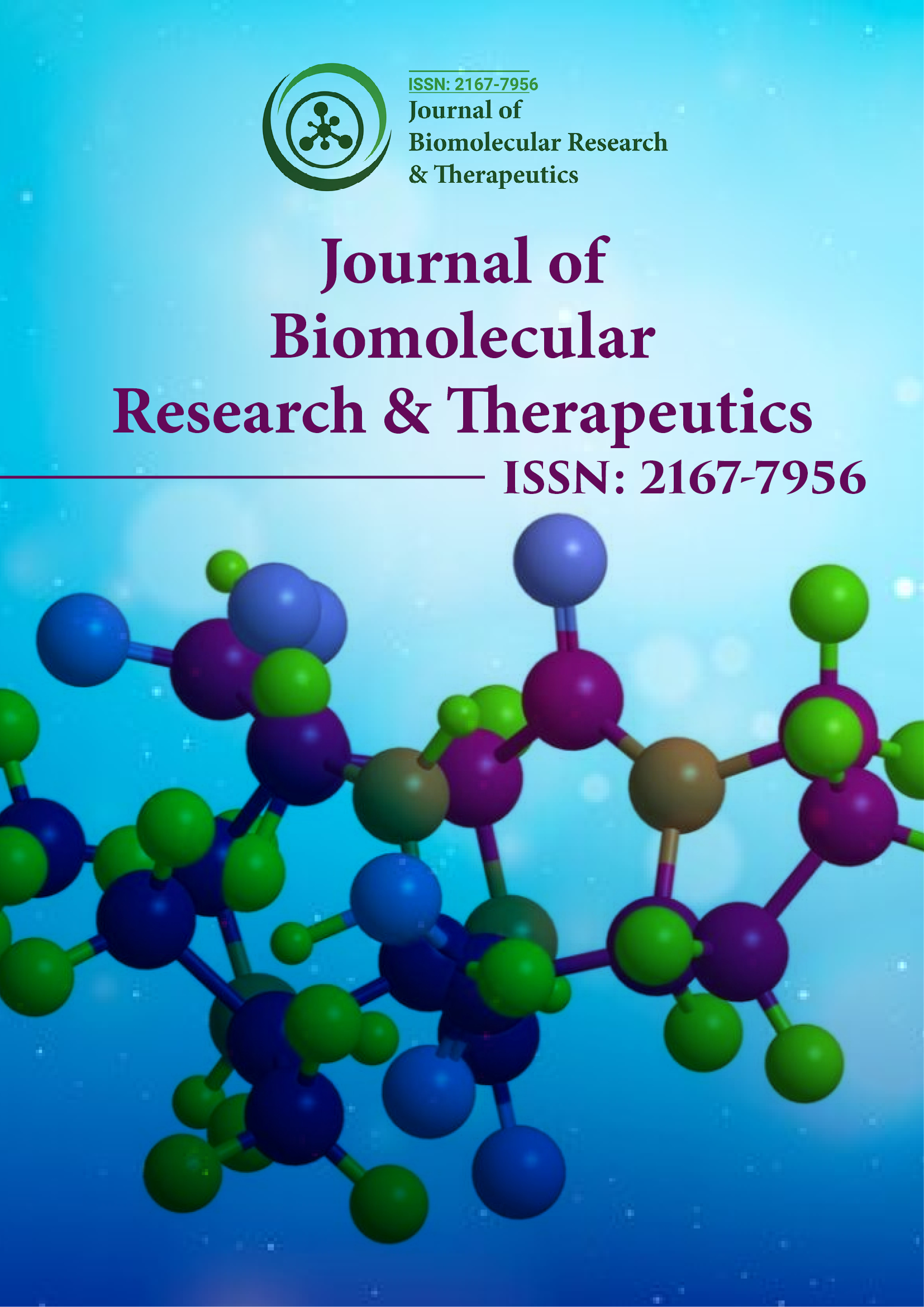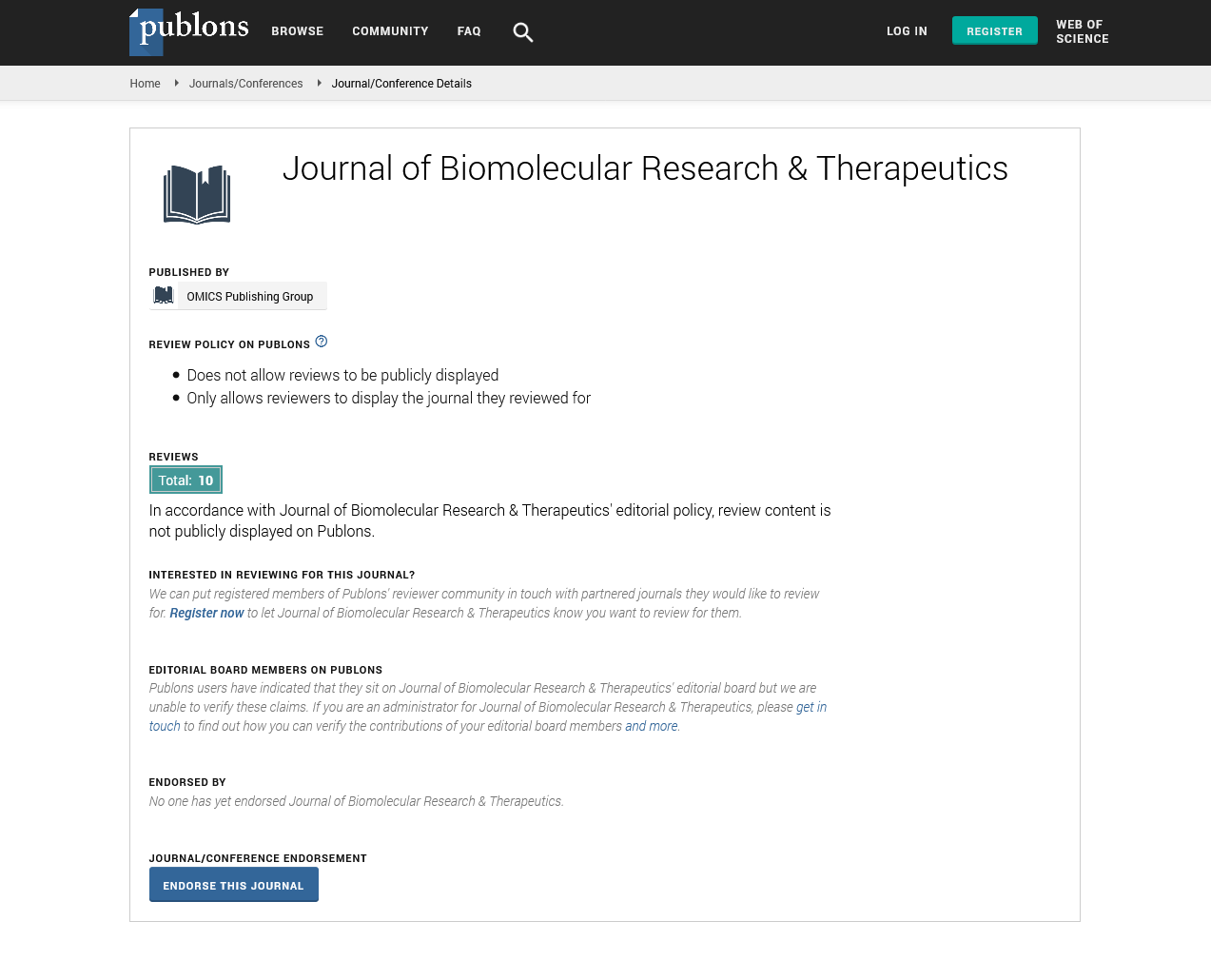Indexed In
- Open J Gate
- Genamics JournalSeek
- ResearchBible
- Electronic Journals Library
- RefSeek
- Hamdard University
- EBSCO A-Z
- OCLC- WorldCat
- SWB online catalog
- Virtual Library of Biology (vifabio)
- Publons
- Euro Pub
- Google Scholar
Useful Links
Share This Page
Journal Flyer

Open Access Journals
- Agri and Aquaculture
- Biochemistry
- Bioinformatics & Systems Biology
- Business & Management
- Chemistry
- Clinical Sciences
- Engineering
- Food & Nutrition
- General Science
- Genetics & Molecular Biology
- Immunology & Microbiology
- Medical Sciences
- Neuroscience & Psychology
- Nursing & Health Care
- Pharmaceutical Sciences
Perspective - (2025) Volume 14, Issue 1
MetalâOrganic Frameworks as ControlledâRelease Carriers for PeptideâBased Anticancer Therapeutics
Chen Xiaoling*Received: 27-Jan-2025, Manuscript No. BOM-25-29383; Editor assigned: 29-Jan-2025, Pre QC No. BOM-25-29383; Reviewed: 12-Feb-2025, QC No. BOM-25-29383; Revised: 18-Feb-2025, Manuscript No. BOM-25-29383; Published: 26-Feb-2025, DOI: 10.35248/2167-7956.25.14.426
Description
Metal Organic Frameworks (MOFs) have emerged as a cuttingedge class of hybrid materials composed of metal ions or clusters coordinated to organic ligands, forming porous, crystalline structures. Their inherent tunability, high surface area and modular architecture make them especially attractive for biomedical applications, particularly in drug delivery. In the realm of cancer treatment, MOFs are gaining traction as promising carriers for peptide-based anticancer therapeutics.
Peptides, due to their high specificity, low immunogenicity and ability to modulate intracellular signaling pathways, are highly effective in targeting cancer cells. However, their clinical utility is often hampered by poor stability, rapid enzymatic degradation and limited bioavailability. This has prompted the exploration of novel delivery systems that can safeguard peptides and facilitate their controlled, targeted release functions that MOFs are wellpositioned to perform.
Peptide-based therapeutics hold significant promise in oncology owing to their ability to target tumor-specific antigens and interfere with pathological signaling pathways, such as those governing cell proliferation or apoptosis. Nonetheless, the physicochemical fragility of peptides in biological environments leads to rapid clearance and insufficient therapeutic concentrations at the tumor site. MOFs offer a solution by serving as protective carriers that encapsulate or bind peptides either within their porous matrix or on their surface. This encapsulation shields the peptides from enzymatic breakdown, enhances their solubility and allows for extended circulation in the bloodstream. Importantly, MOFs can be engineered to release their payload in a time-controlled or stimulus-triggered manner, depending on the therapeutic requirements.
A unique advantage of MOFs is their ability to respond to tumor-specific stimuli such as low pH, high glutathione levels, or the presence of particular enzymes. Tumor tissues often exhibit acidic microenvironments due to hypoxia and high metabolic activity. MOFs designed with pH-sensitive linkers or coordination bonds can degrade specifically under these acidic conditions, triggering the release of the peptide drug at the tumor site while minimizing systemic toxicity. Similarly, redoxresponsive MOFs that respond to intracellular glutathione concentrations offer another mechanism for precise delivery. For instance, disulfide bond-containing linkers can break down in high-glutathione environments, enabling intracellular peptide release. These stimuli-responsive designs not only improve targeting efficiency but also reduce the side effects associated with off-target interactions.
Several specific MOF structures have shown great promise in peptide delivery. Zeolitic imidazolate frameworks (e.g., ZIF-8), known for their pH sensitivity and biocompatibility, are frequently used for encapsulating bioactive molecules. ZIF-8, for example, has been employed to encapsulate pro-apoptotic peptides like p53 activators or cell-penetrating peptides, offering effective delivery in tumor models. Similarly, MOFs like MIL-101 and UiO-66 have demonstrated strong loading capacities and controlled release behaviors due to their adjustable pore sizes and chemical stability. These materials can also be functionalized with targeting ligands such as folic acid, antibodies, or aptamers to further enhance cancer cell selectivity.
The modular nature of MOFs allows for multifunctionality, making them suitable for combination therapies. Researchers have designed MOFs that can co-deliver peptides alongside traditional chemotherapeutics or immune modulators. This codelivery strategy offers synergistic anticancer effects for instance, combining a peptide that induces apoptosis with a drug that inhibits angiogenesis. Moreover, MOFs can be engineered for imaging-guided therapy by incorporating fluorescent tags or magnetic nanoparticles, enabling real-time tracking of drug distribution and treatment response.
Biocompatibility and safety are critical considerations for any drug delivery platform. Recent studies have focused on developing MOFs from biofriendly metals such as zinc, calcium, or iron to reduce toxicity. Additionally, post-synthetic modifications such as PEGylation (attachment of polyethylene glycol chains) have been employed to enhance biostability, circulation time and immune evasion. Preliminary in vivo studies in animal models have shown promising results, with MOFbased peptide delivery systems demonstrating improved tumor inhibition, minimal adverse effects and favorable pharmacokinetic profiles. For example, in a mouse xenograft model, a ZIF-8-based system delivering a tumor-suppressor peptide resulted in significant tumor size reduction compared to free peptide administration.
Despite the notable progress, challenges still remain before MOF-based peptide therapeutics can transition to clinical practice. Issues such as large-scale reproducibility, storage stability, immune recognition and long-term toxicity require thorough investigation. Additionally, understanding the degradation pathways and ensuring the complete clearance of MOF residues from the body is essential for regulatory approval. As the field advances, interdisciplinary collaborations between materials scientists, chemists, pharmacologists and oncologists will be crucial to optimize these delivery systems and evaluate their clinical potential.
In conclusion, metal-organic frameworks represent a transformative platform for the delivery of peptide-based anticancer therapeutics. Their capacity for structural customization, stimulus-responsiveness and multifunctional integration makes them ideal candidates for overcoming the limitations of conventional peptide delivery. With continued research and development, MOF-based systems are poised to play a pivotal role in the next generation of targeted, effective cancer treatments.
Citation: Xiaoling C (2025) Metal Organic Frameworks as Controlled?Release Carriers for Peptide?Based Anticancer Therapeutics. J Biol Res Ther. 14:426.
Copyright: © 2025 Xiaoling C. This is an open access article distributed under the terms of the Creative Commons Attribution License, which permits unrestricted use, distribution AND reproduction in any medium, provided the original author and source are credited.

